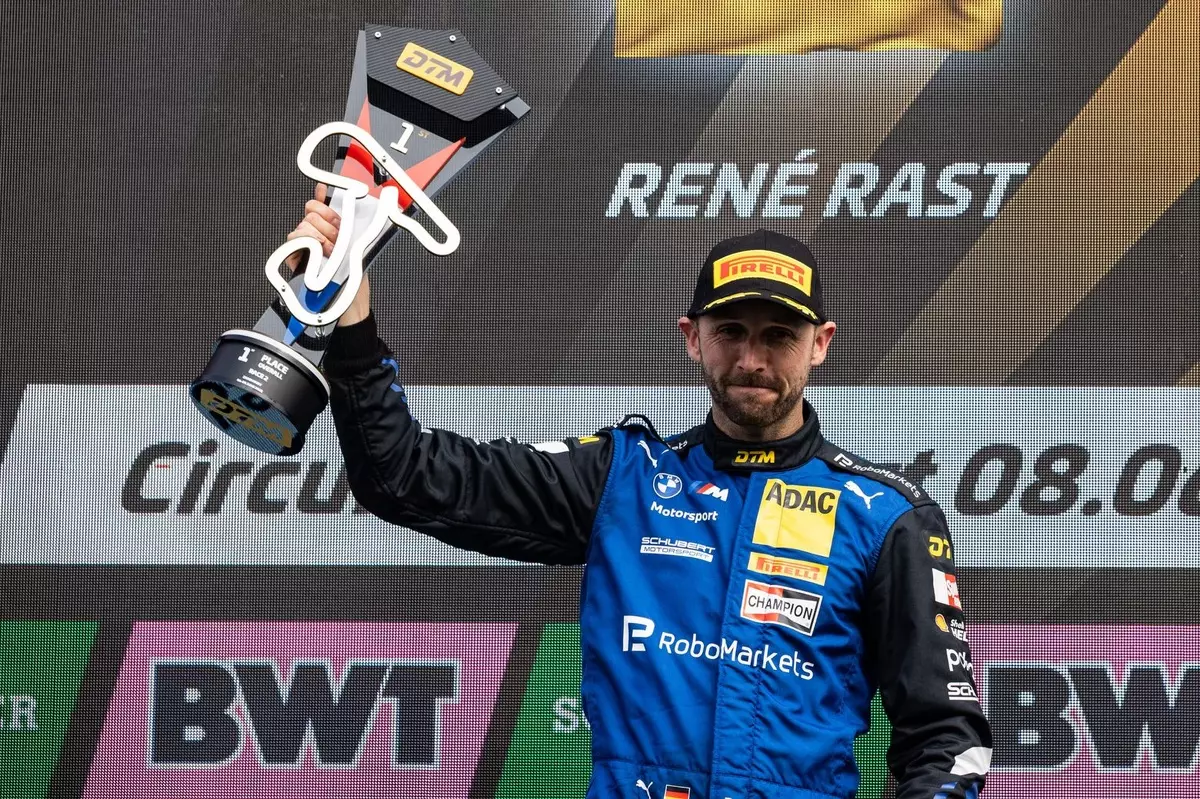The world of motorsport is filled with seemingly insurmountable challenges, but few resonate with the drama and perseverance seen in the recent DTM race in Zandvoort. German driver René Rast of Schubert BMW faced an unexpected hurdle just moments before he was set to compete—an incident that could have derailed his entire race strategy. Stumbling upon an unforeseen obstacle, Rast struck his head on a railing while navigating the pit area. This event transformed what should have been a routine Sunday drive into a remarkable exercise in mental fortitude.
Understanding the implications of such an injury is crucial; even a minor concussion could severely impact a driver’s performance, given the high-speed, high-pressure environment of car racing. However, instead of succumbing to the pain and confusion that would understandably ensue, Rast took two painkillers and focused his mind. His determination serves as a powerful reminder of the psychological demands placed on athletes in competitive sports.
Physical Endurance Under Extreme Pressure
As the race commenced, Rast pushed through the physical discomfort of a headache that he acknowledged in an interview post-race. Initially appearing undeterred, he managed to secure his 29th DTM win, showcasing incredible mental resilience. Yet, as the podium ceremony unfolded, it became evident that Rast’s condition was far from stable. Symptoms of dizziness and tingling fingers worsened, creating a stark contrast between his triumphant exterior and the internal struggle he was facing.
This situation underscores the extraordinary physical and mental endurance required in motorsport. Unlike other sports where breaks allow players to recuperate, racing demands continuous concentration. Each lap is a test not only of speed but also of mental clarity and decision-making. Rast’s ability to maintain focus despite his condition illustrates an essential quality of elite athletes: the capacity to compartmentalize pain while striving for excellence.
The Aftermath: A Race Against Time
After the festive atmosphere of the podium, reality hit Rast hard. Instead of basking in the glory of victory, he was whisked away for medical treatment, highlighting the precarious nature of high-speed racing. Initial assessments were conducted at the track, but the decision to transfer him to a hospital in Haarlem for more comprehensive evaluations was prudent. A CT scan to check for possible cervical spine injuries signified the seriousness of his predicament. It is a fine line that racers walk; the thrill of competition is intimately intertwined with the dangers that accompany it.
Team members and colleagues, including fellow BMW driver Marco Wittmann, were left in shock when they learned of Rast’s injury post-race. This lack of awareness amongst the team emphasizes how isolated drivers can be, even within the confines of their support network. The glamour of racing often overshadows the underlying risks faced, and Rast’s experience serves as a sobering reminder of the potential for crisis in an otherwise exhilarating sport.
Resilience: A Lesson for All
Despite the toll taken on his body, Rast’s swift recovery speaks volumes about the spirit of resilience that characterizes not just athletes but also anyone confronting formidable challenges in their lives. Just hours after his release from the hospital, Rast took to social media to reassure fans and fellow competitors alike that he was ready for his next challenge—a trip to Le Mans. His words reflect a mindset of proactive resilience: “Better safe than sorry.”
In a world that often rewards not only success but the appearance of invulnerability, Rast’s public disclosure of his difficulties humanizes an athlete who many might view as superhuman. His willingness to share this aspect of his experience contributes to a broader narrative about the importance of health, the acceptance of vulnerability, and the need for medical awareness in sports—and life in general.
The crux of Rast’s experience speaks to the heart of competitive sports: the blend of glory, risk, and resilience, forming a tapestry rich with human emotion and determination. His story transcends racing, serving as a powerful lesson about overcoming adversity and pushing beyond physical limitations. In an era that often glorifies relentless drive to succeed at any cost, Rast offers a refreshing, grounded perspective—one that champions safety, resilience, and the human spirit in the face of challenges.


Leave a Reply